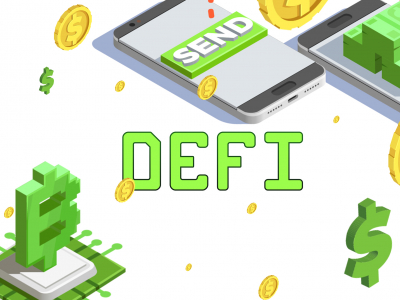When speaking about cryptocurrencies, there is bitcoin and then there is everything else; or so it seems. At the time of writing, CoinMarketCap lists a total of 646 digital currencies starting with bitcoin, ether, ripple, litecoin and dash, and finishing with BTCtalkcoin, the total market cap being US$8,037,837,453.
New altcoins are being created all the time and for very diverse reasons. A couple of months ago, for instance, Reddit user ducklowguy shared with the community his intention to launch an altcoin called BernieCoin (BC) in order to support the US presidential candidate Bernie Sanders. Had it been created, BC would have followed the example of another politician-inspired altcoin, namely the RonPaulCoin (RPC). More recently, on 7 March 2016, Nevacoin was launched and presented as “the first decentralized cryptocurrency ever to be created as a gift for someone's birthday.”
Altcoins ascending or a case of arrested development?
Earlier this year Jamie Holmes suggested that altcoins will see another rise during 2016 in relation to how they answer to current concerns of the bitcoin community, such as, for instance, the increasing centralisation of the bitcoin project, the continuous debates concerning the block size, or the danger of corporate control of mining. Holmes singled out decred, ripple, ether and spreadcoin as altcoins worth watching in 2016. Similarly, Jeff Garzik predicted a “second wave of altcoins and app tokens” and supported his forecast by referring to maturing software “that lets anyone start their own side chain or counterparty-like metacoin.”
However, Amanda B. Johnson in The Daily Decrypt recently expressed an opposite view warning that “in the cryptocurrency sphere as a whole, … bitcoin itself now threatens to become a single-point-of-failure as its developers have failed to keep the available supply of processing capacity in line with the demand.” The trouble lies in the fact that the majority of altcoins are currently exchanged mostly for BTC and very few of them could be used directly to purchase goods or services. The popular webcast argues that one of the most important tasks ahead for altcoin creators and users is further development and improvement of the corresponding infrastructures, such as proprietary exchanges, mobile wallets, and payment processors.
So far, however, the trend is rather opposite, with analytics and recommendations, such as those by Deloitte, talking about the cryptocurrency ecosystem as a whole, often disregarding the variety of coins out there. One might even be tempted to see this generalising discourse as a way to introduce state-sponsored cryptocurrencies as the ‘best of both worlds’ and an improvement, from the point of view of banks and regulators, of otherwise unpredictable and uncontrollable bitcoin. In fact, Deloitte has indeed referred to state-sponsored cryptocurrency as an adaptation of “bitcoin’s innovation to the payments ecosystem.” In the same online publication (July 2015) the analyst emphasised bitcoin’s “notable shortcomings” related to the currency’s inability to comply with governmental requirements, volatility of value and the lack of endorsement “by ‘trusted’ bodies.” Against this background state-sponsored cryptocurrencies seem an ‘ideal’ solution by virtue of their ‘safety,’ namely they are just as innovative technologically, but at the same time as familiar as the standard fiat currencies, thanks to a central bank’s backing.
Contrary to all that, Val Srinivas, Banking & Securities research leader at the Deloitte Center for Financial Services, argues that independent “digital currencies will evolve and be more accepted in the mainstream, as usage increases and they become interoperable with other currencies.” Along the same lines, Deloitte’s seventh Technology Trends report featured a short analysis by Brian Forde, Director of digital currency at MIT Media Lab, who emphasised the role of cryptocurrencies as facilitators of monetary and legal transactions without third parties and stated that “in fact, similar to the Internet, which exponentially increased communication by reducing cost and friction to near zero, cryptocurrencies have the potential to exponentially increase transactions for the same reasons.”
Recently, Salil Deshpande, Managing Director at Bain Capital Ventures, also reaffirmed his belief that “non-fiat stores of value that are more convenient to manipulate and transport than gold will have a bigger place in the future.”
Bitcoin vs ether
While bitcoin’s price has been relatively stable during March 2016, ether has seen a steady rise since the beginning of 2016, reaching a peak on 13 March 2016. The Hong Kong-based cryptocurrency exchange Bitfinex started trading ether on 14 March 2016. Until then it was being traded only on Kraken, Poloniex and Shapeshift. Importantly, Bitfinex allows the exchange of ETH both for BTC and for USD. Ethereum’s success and the block size rift within the bitcoin community have raised the question whether ether can substitute bitcoin and even whether bitcoin is dead (yes, that again). Even though its creators keep emphasising that Ethereum is not an altcoin, exchanges and their users do not see much difference.
Meanwhile, as CoinFox wrote recently, Ethereum’s platform-specific cryptographic token called ether was not initially intended for market speculation. It was rather seen as an incentive for application developers building on the Ethereum’s platform. Thus, ether was not conceived as an alternative to bitcoin: in fact, supposedly both should complement each other within the cryptocurrency ecosystem. Moreover, Ethereum’s platform as a universal tool allows its users to create their own cryptocurrency.
In her comparison between bitcoin and ether, Prableen Bajpai, Founding Director at FinFix, outlined the differences between them as follows:
While both Bitcoin and Ethereum are powered by the principle of distributed ledgers and cryptography, the two differ in many technical ways. For example, the programming language used by Ethereum is Turning complete whereas Bitcoin is in a stack based language. Other differences include block time (Ethereum transaction is confirmed in seconds compared to minutes for Bitcoin) and their basic builds (Ethereum uses ethash while Bitcoin uses secure hash algorithm, SHA-256).
In addition to the technical differences Bajpai emphasised the fundamentally different purposes of bitcoin and ether:
While Bitcoin is created as an alternative to regular money and is thus a medium of payment transaction and store of value, Ethereum is developed as a platform which facilitates peer-to-peer contracts and applications via its own currency vehicle. While Bitcoin and Ether are both digital currencies, the primary purpose of Ether is not to establish itself as a payment alternative (unlike Bitcoin) but to facilitate and monetize the working of Ethereum to enable developers to build and run distributed applications (ĐApps).
What else is there: altcoins with a promise
At the end of 2015, Lumbridgecity singled out four altcoins as the best cryptocurrency investments for the upcoming year, one of them being ETH. MaidSafeCoin (MAID), BitShares (BTS) and Factom (FCT) were the other ones mentioned.
Like ether, MaidSafeCoin is conceived as “the oil in the engine” of the SAFE (Secure Access For Everyone) Network. It facilitates the network’s operations and it incentivises network participants. A total of 4.3 billion coins will be produced during the network’s life. MAID’s price grew by 242.47% by mid-February 2016 and reached its highest level so far on 7 March 2017. Despite its slight descent ever since, MaidSafeCoin is on the top of CoinMarketCap’s list of crypto-assets.
Similarly, BTS’s price rose with 38.01% by mid-February and exactly like MAID and ETH peaked in March, namely on 13 March 2016, in order to descent slightly in the following weeks. The peak followed the announcement of the addition of BitShares to the Microsoft Azure platform. BTS is the core currency of BitShares financial smart contract platform. One of its most important uses is to back the value by 100% or more of the so-called SmartCoins which can be built on the BitShares platform. A SmartCoin can always be converted to BTS. The benefit of a SmartCoin, a BitUSD for instance, is that its value is pegged to that of another asset, the US dollar in our case, and thus the SmartCoin’s price is stable.
Finally, as Lumbridgecity pointed out, Factom coin’s price went up 166.36% in early 2016 and so far it follows the same pattern as MAID, ETH and BTS, namely it was rising until it reached its peak on 8 March 2016 and subsequently it started falling down. FCT is the main cryptocurrency used by Factom’s ecosystem whose main purpose is to record various types of data in a scalable layer added on top of the bitcoin blockchain, such as for instance the 28,000 books gathered by Project Gutenberg. An important feature Factom offers is the possibility to create user Chains and Entries on Factom without having FCT and a cryptocurrency wallet.
Leaving aside more established cryptocurrencies such as litecoin (LTC) and dash (DASH), for instance, what seems to be instrumental for the success of newly-created altcoins is the degree of innovative and disruptive potential demonstrated by the technology they facilitate. Such is the case of Decred and its hybridised proof-of-work / proof-of-stake consensus system, and SpreadCoin and its claim to prevent centralisation of hashing power in pools.
It seems appropriate to conclude by quoting yet another of Deloitte’s predictions. According to their article Banking reimagined: How disruptive forces will radically transform the industry in the decade ahead,
Bitcoin and other digital currencies will likely enter the mainstream, but only with adoption of standards and compliance with global regulatory frameworks. Many of the “coins” that exist today will vanish, for lack of any real demand. We will, however, see the vision of state-sponsored cryptocurrencies becoming a reality in five years.
Diana Bogdan

















